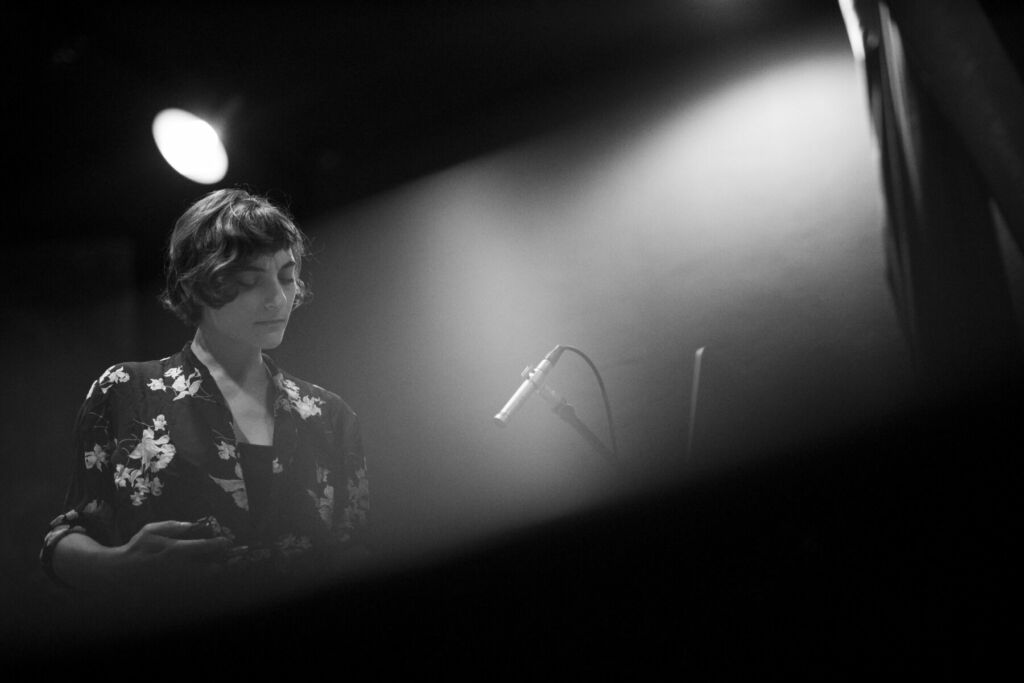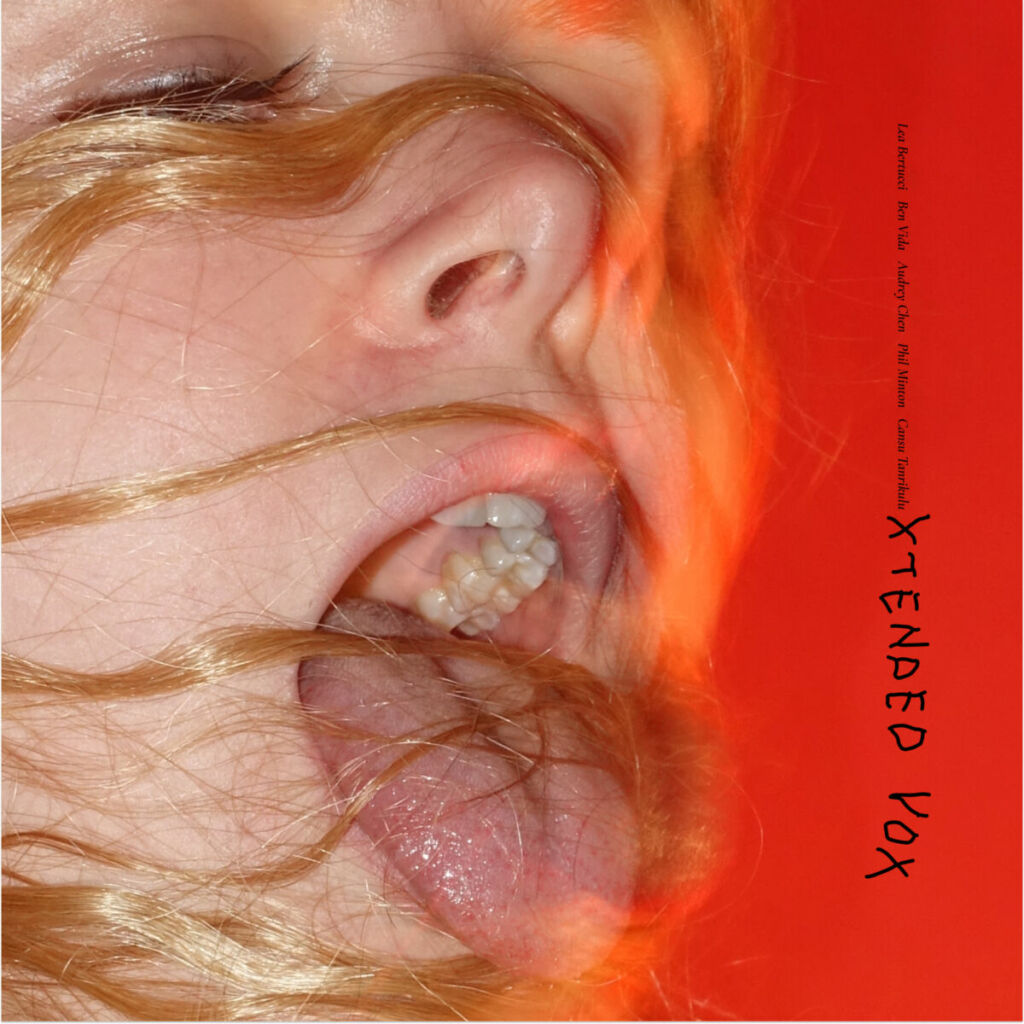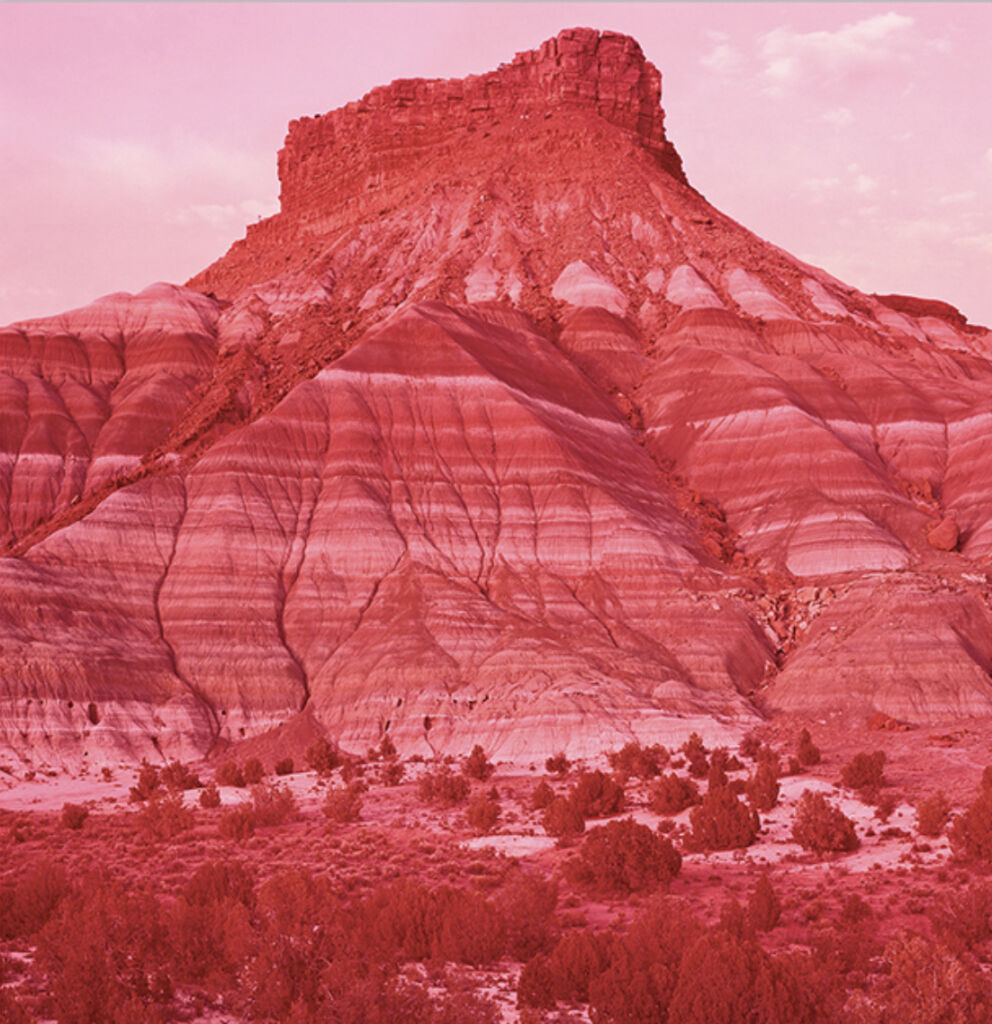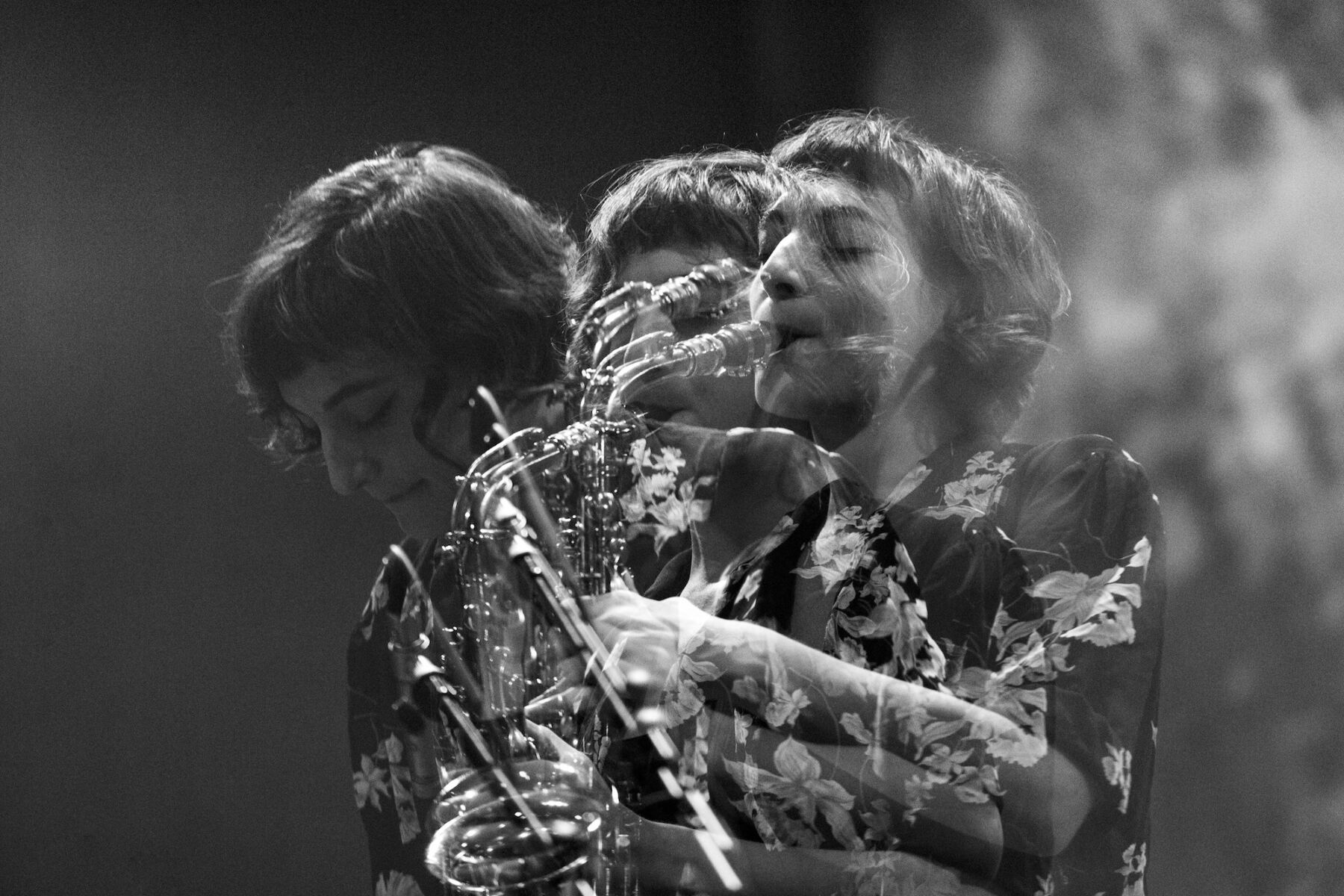Interview by Luca Nasciuti

Lea Bertucci is an artist, composer and performer with a body of work that investigates and is informed by acoustic events and biological resonance. She is a performer who has worked extensively with wood instruments and is a sound designer for dance and theatre. Bertucci has recently been expanding her interests into installation and site-specificity and incorporates multi-channel speaker arrays, electroacoustic feedback, timbral approaches to composition and tape collage.
Bertucci defines her work as a product of her curiosity and fascination with her surroundings. This is why her work takes many forms (Tone Glow 2021). There is great openness and honesty in how Bertucci carries her story in her work. She does not shy away from discussing the impact of insecurities and privilege in her approach to making (ibid).
There is a sense of spontaneity in how the artist experiments with sonic material, whether it is tapes, field recording, instruments or the voice, that sets her apart from academic composition practices such as electronic and electroacoustic music of the global north. But such openness to the present time and its possibilities allows her language to develop, change, evolve and migrate from one physical realm to another.
The body is central to her practice. The way Bertucci develops her work is instinctual to sound resonating with the body. This very tactile response to sound allows Bertucci to draw on spaces, their resonances and the harmonic identity that spaces produce when a body is active in them – being that a listener, performer, or both.
Site-specificity is intentionally a starting point for the creative process. The location is a prompt that allows the artist to investigate how spaces respond to sound. With tools that facilitate activation, Bertucci establishes a relationship with spaces similar to one with a musical instrument. Different microphone techniques are applied to record the behaviour of sound in space. Instead of producing the sound, the composer diverts her attention to how the space responds to those sounds.
Such an approach is evident in many releases, such as Acoustic Shadows (2020), resulting from a series of performance recordings and installations under the Deutzer Bridge in Koln (Germany) in 2018. The work, part of the Brückenmusik 24, consisted of a series of performances recorded and played back on an 8-channel speaker system installed along the bridge.
Different performances by solo alto saxophone, an 8-piece brass ensemble and three percussionists were recorded at different times and played back in a loop on location. This process produced an overlay of different textural elements reinforced by the bridge’s 14 seconds reverberation and the location’s ecology (traffic and human activity).
In line with Bertucci’s multimodal approach to production, Acoustic Shadows developed into a sample library of cavernous, textural pads and SFX published by Spitfire Audio. Bertucci’s sound is inherently rooted in space and presence. Sound is texture, time, space and agency. It embodies all definitions as a fluctuating continuum: everchanging but always present.


Your work encompasses different creative practices and methods investigating sonic phenomena in composition, performance and installation. How do you approach sound, whether it is live or recorded? What is your methodology for composition and design?
I am always seeking something that has yet to be heard. Although there are many inspirations from artists whose work has influenced my own, I am always attempting to create a unique and idiosyncratic voice as an artist, using the sounds of my everyday experience – field recordings, resonant spaces etc. I try to evoke a vision of the world that is not completely at ease with itself, where contradiction and dissonance create possibilities for beauty.
I wouldn’t quite call my practice a “methodology” because, although there are guiding fascinations and overarching aesthetics, my approach to a project (whether durational, site-specific or as a recorded document) is constantly changing as per the concept of the work. My goal is to move the listener emotionally, allow them to reconsider their ideas about music and the world around them, and give them special visions that they carry with them for a long time.
Spatiality plays an important role in the definition of your work. Acoustics and biophony are pillars of your extended practice. How do you translate scientific and cultural data of natural phenomena in your work?
For my works that deal with acoustic spaces, I often use the “room tone” or dominant resonant frequency of a room as the harmonic basis of the piece. Although I do some acoustic analysis, this is a soft science, and my armchair understanding of physics makes it an experimental kind of research. I just look for the tone that makes my guts rattle. Regarding cultural influence, I don’t believe in ghosts, but I often wonder what non-physical markers are left in a space from long ago. How can a site enrich someone’s experience of a piece, and how can knowledge of the history of that site guide my own creative decision-making?
The process of translation, or accommodation of acoustic phenomena in your production, is reflected in manipulation and sound processing. What is the relationship, if any, between the source and the outcome?
I see live presentations and recordings as two different but sometimes overlapping areas of my creative practice. I gave up long ago on trying to replicate the feeling of being in a space through recording, so instead, I create new spaces that are designed for the experience of independent listening, scaled to the media on which they are released (I’ve made endless loop cassettes, 7-inch flexi discs, LP’s and CD’s/Digital downloads). Maybe one day I’ll make a laser disc and fulfil my retro fantasies.
Improvisation is a core element of your practice. Collaborations are based on improvisation, and sonic/musical material is generated from this process. What are the parameters you give yourself when improvising?
As they say: “first thought, best thought”. I’m interested in the relationship between the subconscious and improvisation. Although I am not solely an improviser, I keep coming back to it as possibly the most radical form of music-making. Certainly, one that is ancient and contemporary simultaneously. I also like to think about improvisation as a site-specific practice: when the player is tuned into their environment in a complete way, how they respond to the sounds around them, to the reflections in the room, to what someone said to them five minutes before the set, their dream the night before.
Your new release with SA Recordings Xtended Vox features guests and friends lending their unique sonic identity to a collection of original works for the voice. Could you describe how this compilation draws from and pushes the boundaries of extended vocal techniques and production today?
I am very excited about the diversity of the compilation, both in terms of the range of sounds and the individuals who are contributing. For example, Phil Minton is in his 80s, with so much experience honing his voice and taking it to the extreme reaches. On the other hand, Cansu Tanrikulu, who is in her twenties, from Turkiye, and like many of us, is deeply exploring what her voice is capable of. This compilation puts forth an expansive notion of the intricacies and range of the voice. The lived experiences inform each track of each of its contributors. I hope the compilation will open listeners up to the more radical timbres of the voice.
As well as the album, you have produced a vocal sample library for Spitfire Audio. What do you intend for this work? Do you see these sounds as products, tools, aid, and inspiration for others?
The sample library aspect of this release is an act of generosity to the many people who also make music and are inspired by weird sounds. I love when random people send me tracks they’ve made with my libraries. I don’t feel that it’s challenging to let go of these sounds because I find that most folks make music so different from mine, and it’s fascinating to see my sounds recontextualised this way. Also, because we are all victims of global capitalism, and it’s impossible to make money from selling records now, the libraries have helped me sustain my creative life.
Residencies are integral to your creative production. You have taken residencies in the US and abroad in many different forms, from installation to performance. Could you describe how artistic residencies differ from your studio practice?
Dedicating real time and space to making something is an enormous privilege. A residency facilitates a deeper concentration, inquiry, and engagement. It’s adorable to be left alone to my own devices. I usually go to a residency with specific goals in mind, tailored to the resources offered by that residency, whether it is a fantastic production studio with delicious gear or some kind of unique resonant space in which to record. Although I’ve improved at maintaining my studio practice when I am in my own studio at home, I usually develop collaborations, do post-production, or attend to more boring matters like scheduling rehearsals and sending riders.
As an artist working across multiple disciplines, how do you define your relationship with music, sound art, performance, and installation? Are these separate from each other, with distinct forms and structures, or are they part of a continuum, a spectrum with nuances that lean towards distinctive features within the same category?
In Alan Licht’s book, Sound Art Revisited he makes a compelling argument for the separation of experimental music and sound art. Still, I have to admit that I’m not entirely on board with that for my work. I love the idea of a music not contingent on linear notions of time, of music set up “in the round” without a fixed position for its audience, or that speakers themselves can act as instruments, or of household objects as musical instruments, not in need of human players. So I fully embrace music without vestiges or markers of the classical or familiar traditions.
What do you think are the challenges to creativity and creative processes today?
We live in a moment of genuine upheaval on the scale of our civilisation. Being here in the United States, it is hard not to see us sliding backwards into a new dark age ruled by superstition and scarcity for most people. The churning of disaster capitalism, wherein artists feel as though they must brand themselves, sacrifice their ethics and sanity just to do anything and compete among each other for the most meagre of opportunities is antithetical to the creative spirit.
You couldn’t live without…
A body of water nearby.






